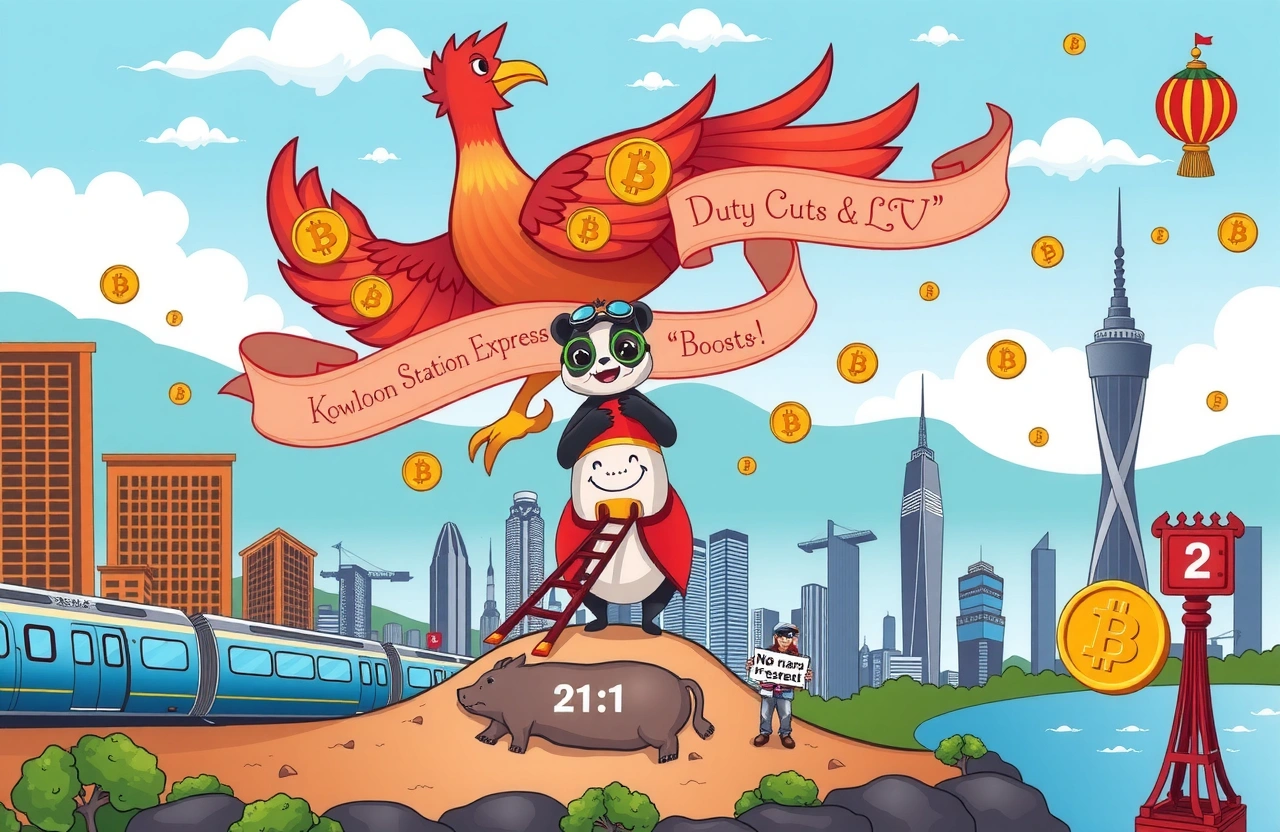Real estate experts worldwide openly gasped when Hong Kong’s property market statistics rolled in during Q1 of 2025. Against a backdrop of cautious forecasts predicting prolonged stagnation, transaction volumes surged 18% year-on-year, while luxury home prices climbed 12%—figures not seen since the pre-pandemic boom years. This astonishing property rebound caught even veteran analysts off guard, rewriting the narrative about Asia’s premier financial hub just when skeptics questioned its resilience. Market trajectories that seemed locked into decline suddenly reversed with unexpected speed, signaling a historic market turnaround that demands thorough examination.
The Perfect Storm of Recovery Factors
Multiple converging forces catalyzed Hong Kong’s unexpected property rebound. Unlike previous cycles, this recovery displayed unique characteristics worth unpacking.
Policy Shifts Turning the Tide
Strategic government interventions played the most crucial role:
- – Stamp duty reductions for foreign buyers from 15% to 7.5%
- – Relaxed mortgage restrictions with LTV ratios increased to 80% for first-time buyers
- – Fast-tracked infrastructure development approvals boosting surrounding land values
The policy reversals signaled commitment to market revitalization, responding to calls from industry bodies like The Real Estate Developers Association.
International Capital Floodgates Open
Two powerful investment waves fueled momentum:
- – Mainland Chinese investors allocated portfolios toward HK properties at highest level since 2018 (Source: Knight Frank Q2 2025 Global Investment Report)
- – Southeast Asian family offices redirected 23% more capital into Hong Kong real estate than 2024, seeking haven assets during regional volatility
Sector Spotlight: Where Growth Ignited
Recovery patterns revealed fascinating sector divergences, defying traditional market hierarchy assumptions.
Luxury Sales Shattering Glass Ceilings
Ultra-high-net-worth activity triggered extraordinary premiums:
- – The Peak saw HK$350M mansion sale, setting new price-per-square-foot record
- – Repulse Bay waterfront transactions increased 40% year-to-date
Pent-up demand for trophy properties demonstrated pandemic restraints had compressed premium market demand to explosive levels.
Middle-Market Renaissance
Newtown Plaza Shatin recorded its highest sales volume in a decade, exemplifying suburban revival, while Kowloon Station mixed-use towers achieved 98% occupancy within 90 days of debut—evidence of robust residential rental rebound.
Behavioral Shifts Driving Market Dynamics
Beyond economics, societal transformations fundamentally reshaped demand patterns during this property rebound.
The Work-From-Hanyu Phenomenon
Hybrid work arrangements became culturally entrenched:
- – 68% of new buyers prioritized home offices and recreational space over CBD proximity
- – Discovery Bay and Tung Chung emerged as unexpected growth corridors
Generational Transfers Reshaping Demand
Inheritance events created unconventional purchasing pools:
- – Millennial heirs liquidating mainland factories poured HK$7.8B into commercial properties (Source: JLL Capital Markets Review)
- – Downsizing retirees released mid-tier housing inventory without discounted pricing
Enduring Challenges and Emerging Opportunities
Sustaining the property rebound requires navigating complex emerging realities that could impact long-term momentum.
Affordability Tensions Require Creative Solutions
Despite recovery, first-time buyers face persistent barriers:
- – Median income-to-property-price ratio remains at 21:1 despite government schemes
- – Developers pivoting toward nano flats (200 sq ft) faces public backlash
Commercial Conversions Unlock Hidden Value
Vacant office conversions generated surprise commercial property rebound sector:
- – Swire converted Taikoo Place offices into biotech hubs achieving 30% lease premiums
- – Hybrid retail/co-working spaces doubled valuation in Kowloon East warehouses
The Path Ahead for Hong Kong Real Estate
Current indicators suggest Hong Kong’s property rebound possesses unusual staying power. Housing Authority forecasts project 9-15% price appreciation through Q4 2026 unless global interest rates shift dramatically. Crucially, diversified investment sources—from Middle Eastern sovereign funds doubling allocations to Vietnamese venture capital entering mid-market segments—provide shock absorption against regional volatilities.
The 2025 renaissance transformed professional approaches to Hong Kong property. Developers accelerated sustainable construction standards after Goldman Sachs prioritized ESG-compliant assets in financing agreements. Brokers now incorporate cryptocurrency payment feasibility analysis for all major listings as Web3 investor activity quadrupled since January. Perhaps most significantly, the psychological barrier regarding market limitations dissolved—proving Hong Kong real estate still possesses remarkable regenerative capacity when conditions align.
For market participants wondering whether to capitalize on this property rebound, our analysis indicates pricing hasn’t peaked in emerging neighborhoods. Subscribe to our quarterly Hong Kong Property Pulse Report for neighborhood-specific heat maps launched since the rebound began. Track infrastructure projects through our interactive map to identify tomorrow’s growth corridors today—because Hong Kong just reiterated why it remains where fortunes transform forever.



